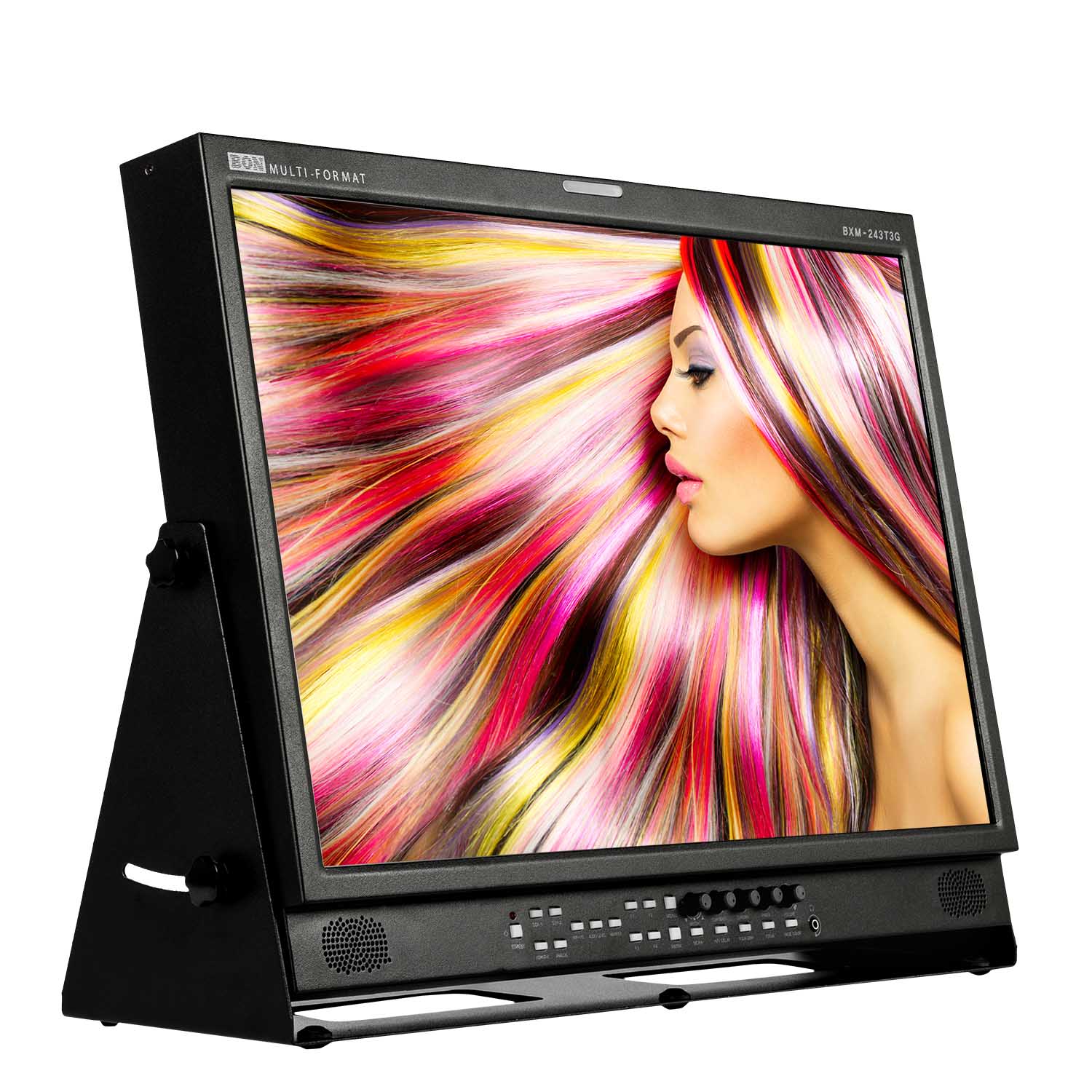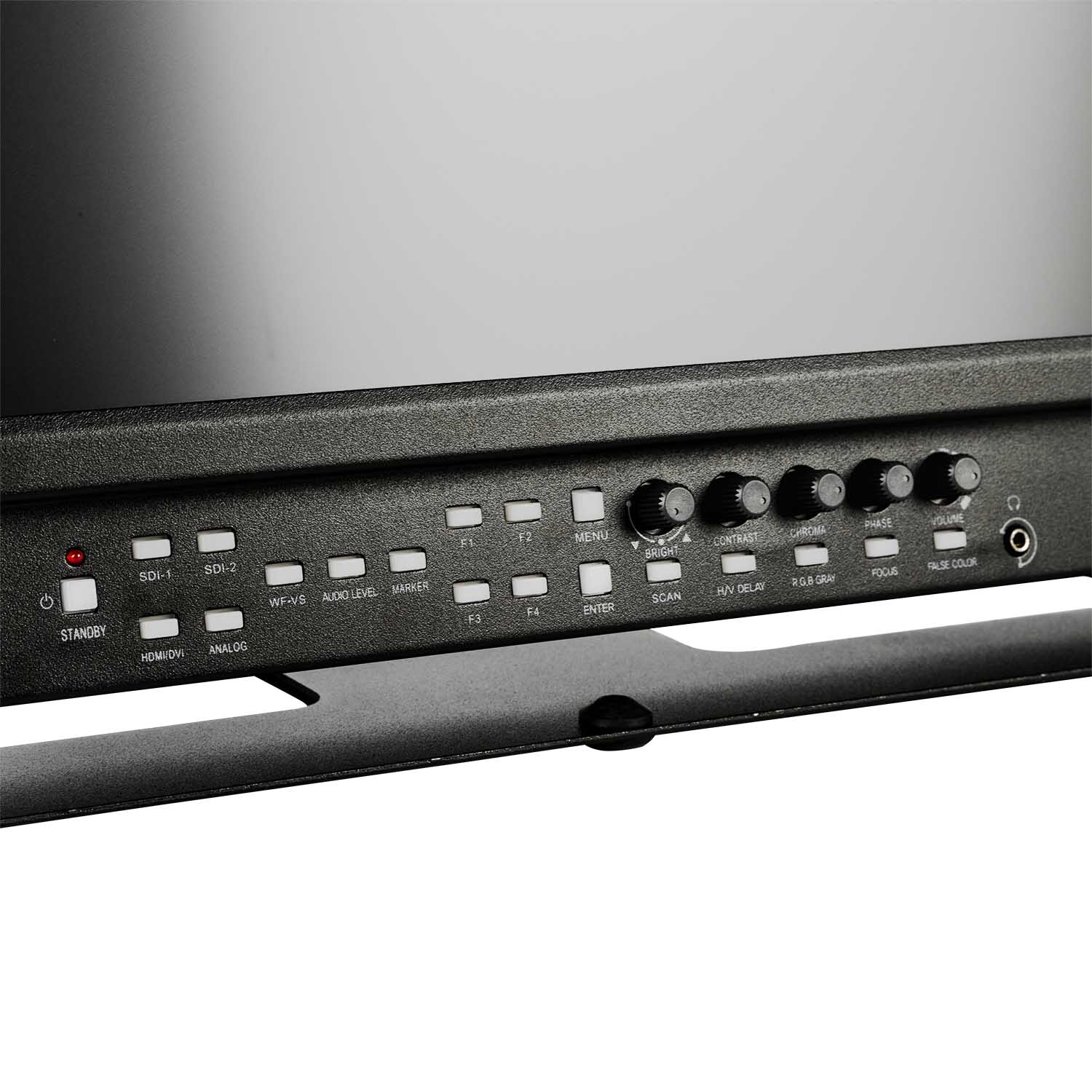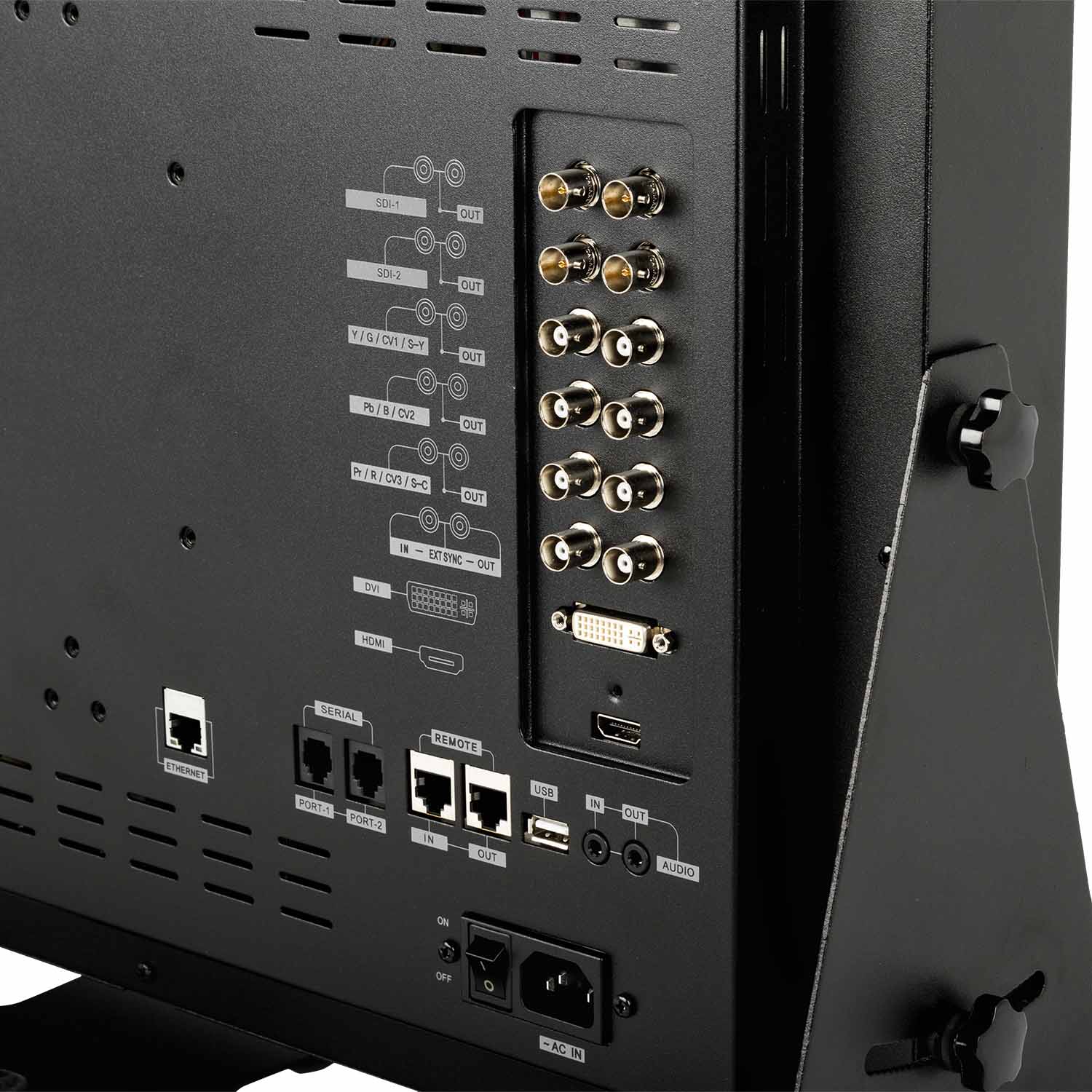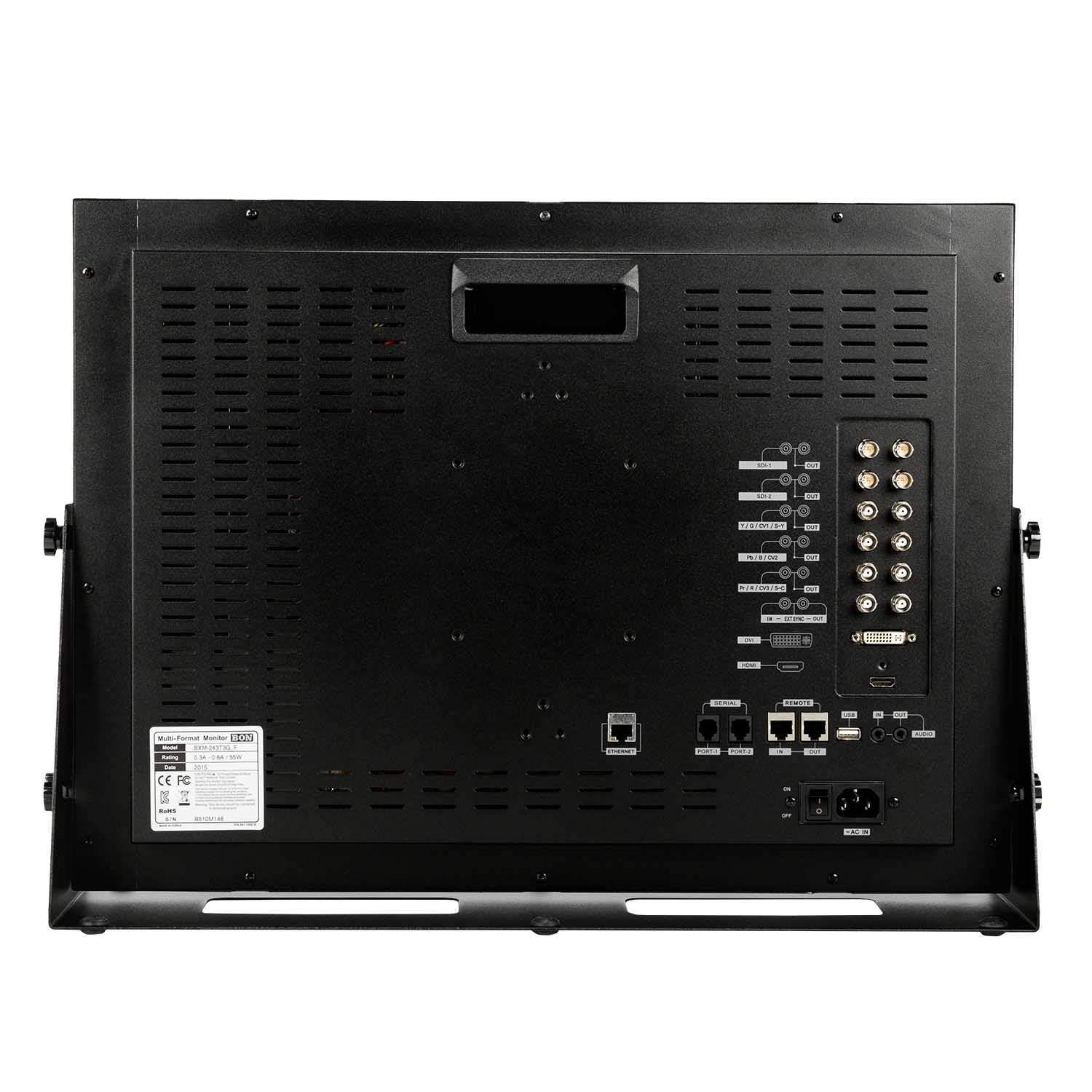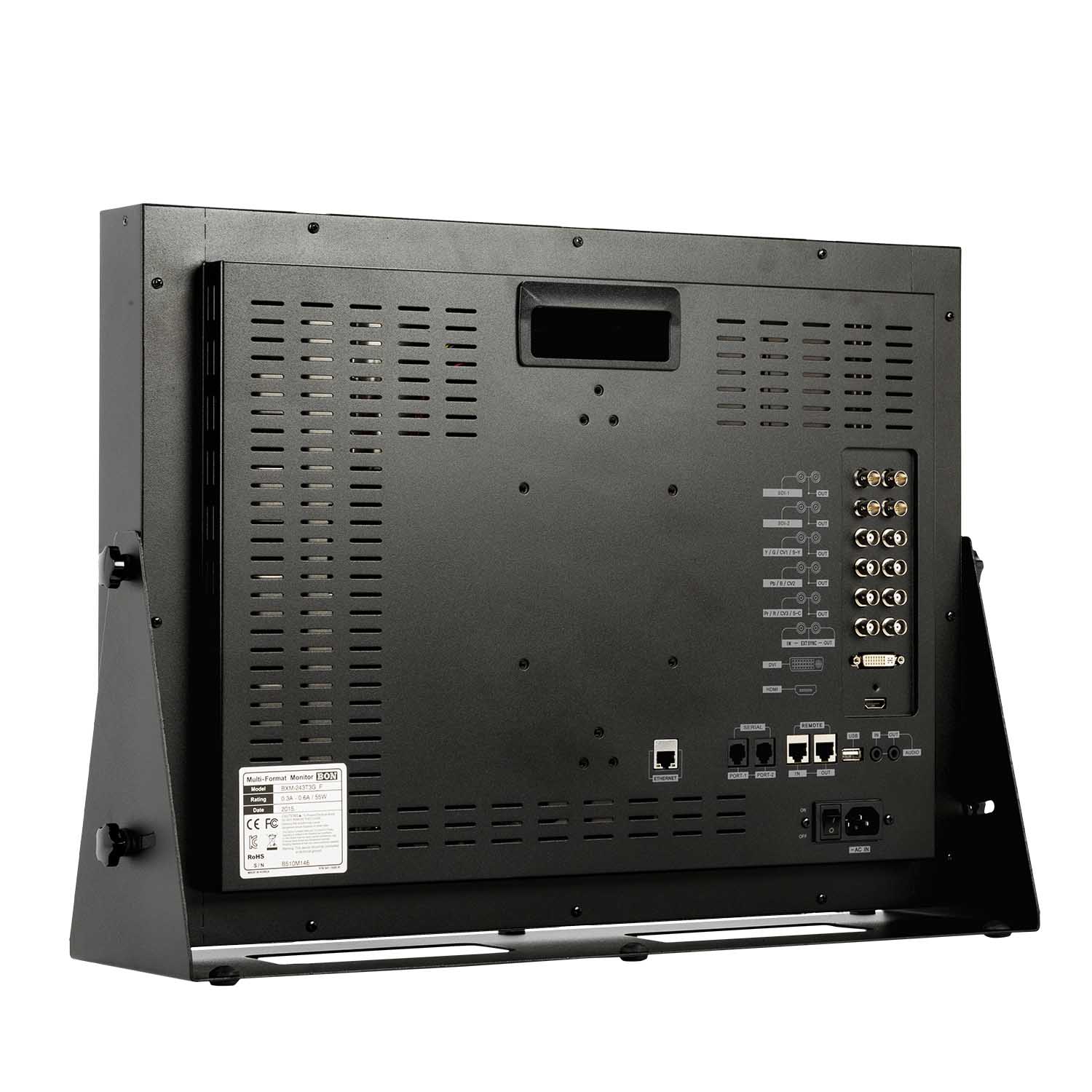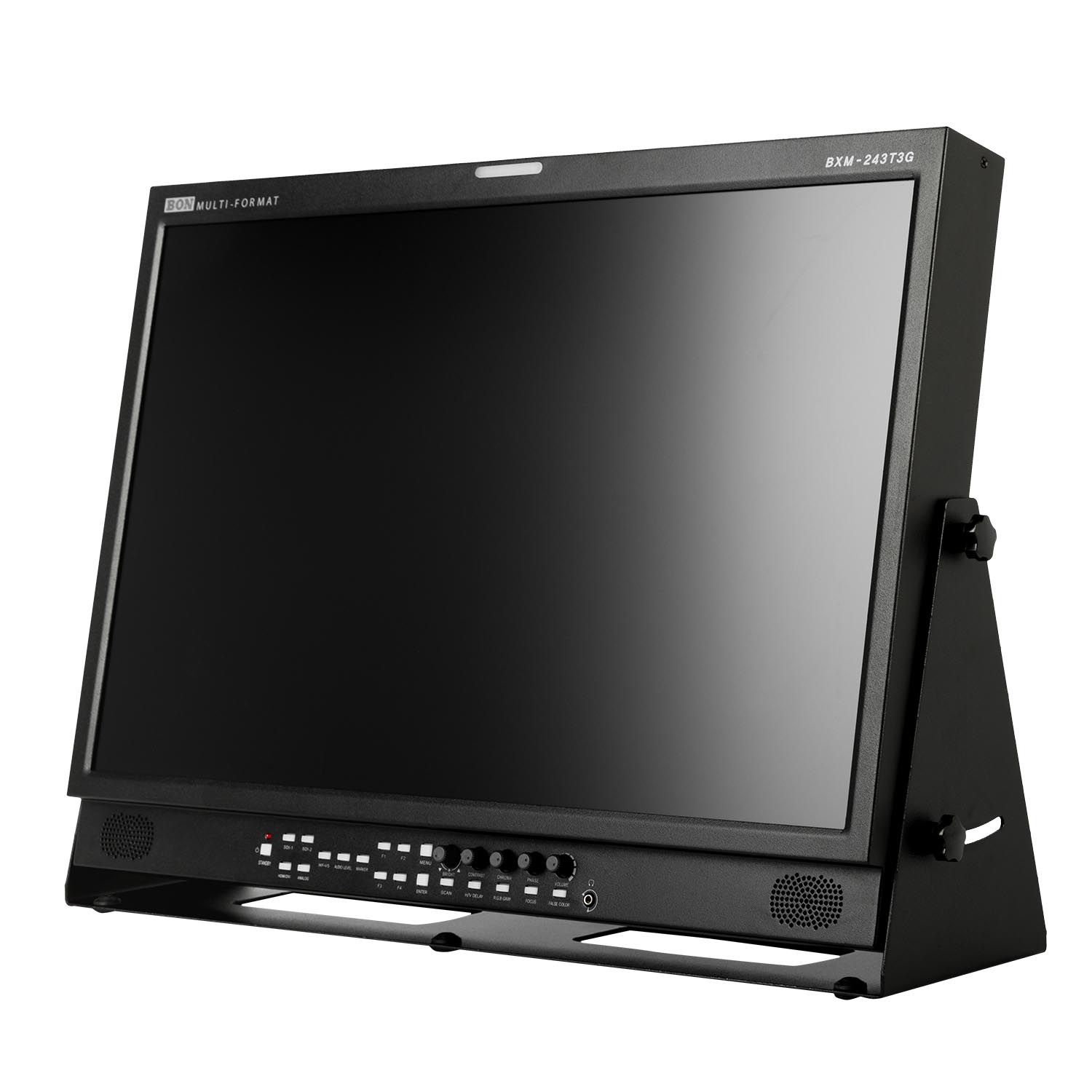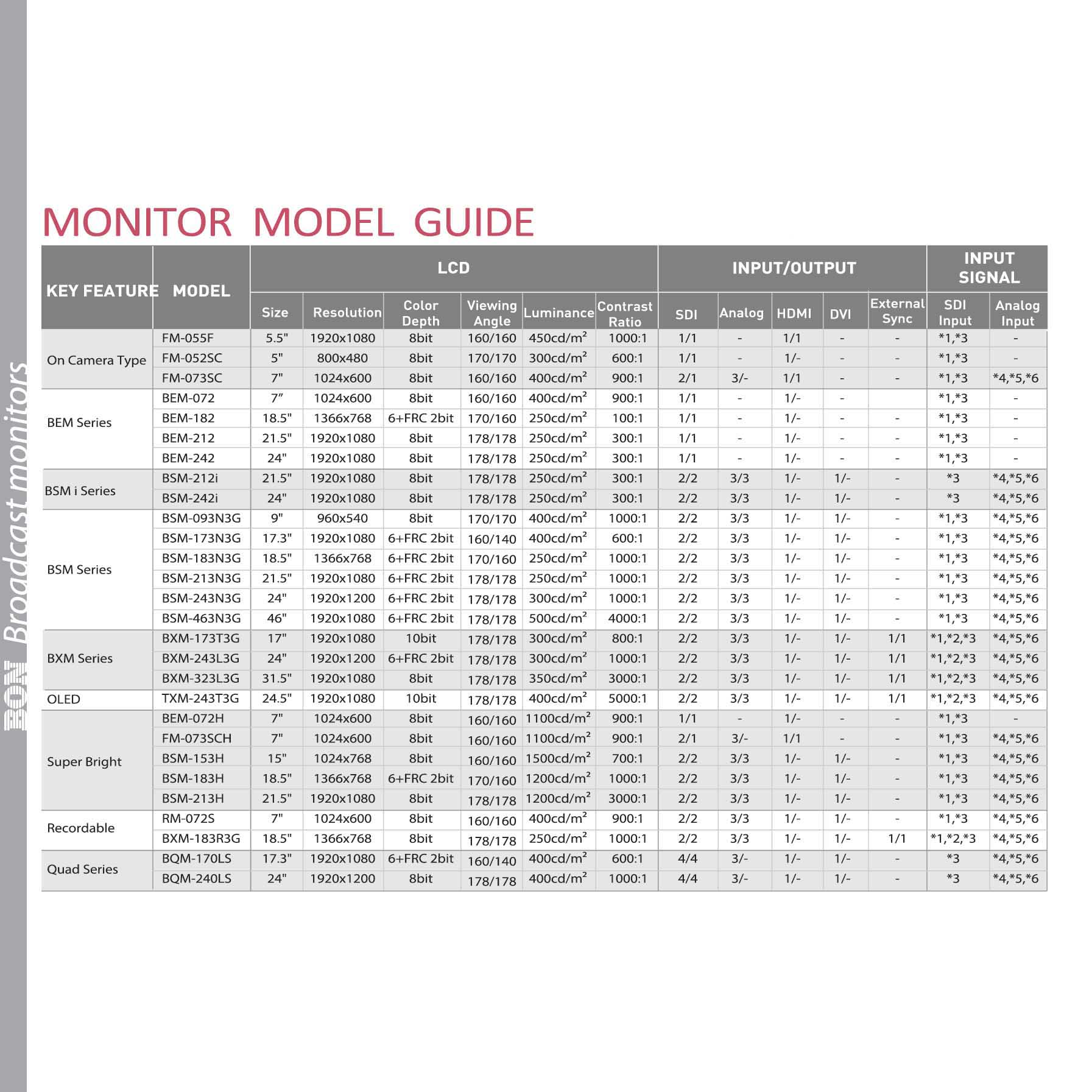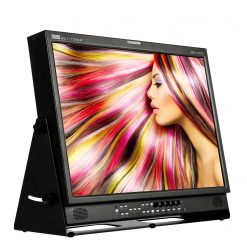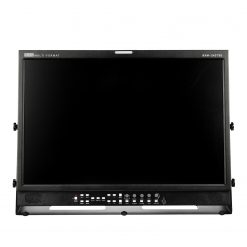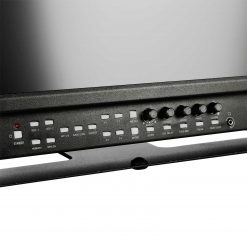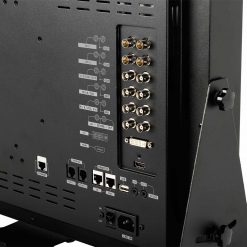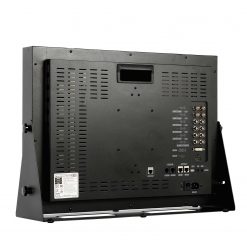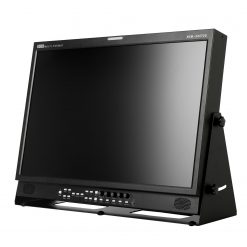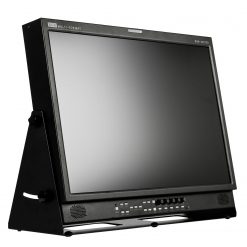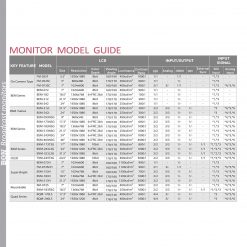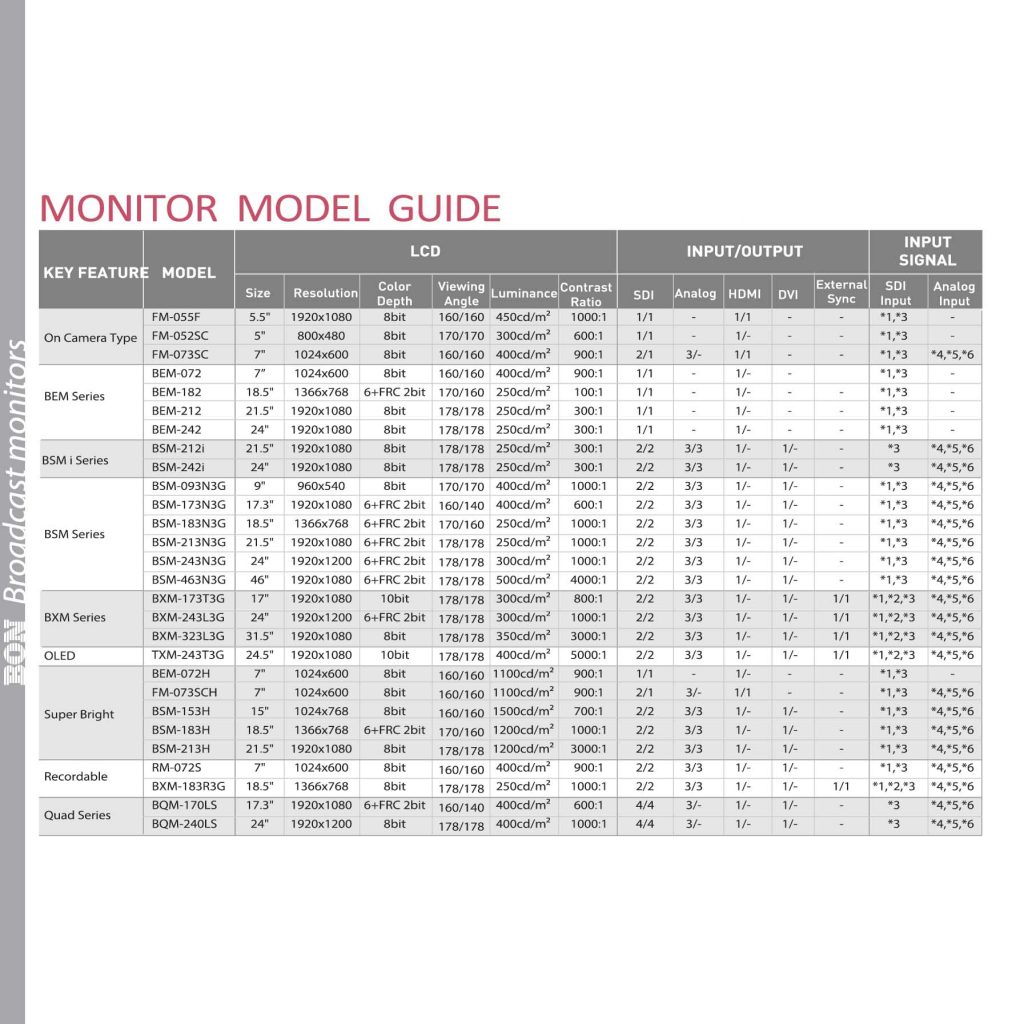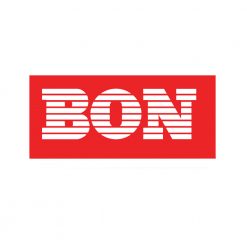
BXM-243T3G
Studio monitor, field monitor, or just the thing for a DIT, the Bon BXM-243T3G, is ideal for a variety of uses. It is at home in the studio or out in the field for DIT, VFX, or anyone who demands a high precision 10-bit panel with 12-bit internal processing and an assortment of image diagnostic tools. This 24″ monitor features a 1920 x 1080 panel with overscan /underscan functionality, front panel buttons and four assignable function buttons so you can skip the menu and go directly to often used functions. The plethora of inputs, remote ports, and AC and DC inputs make this well suited to studio, truck or cart installation, yet the built-in handle and removable desk stand point to is portable field use. About the only place you wouldn’t use this 24″ monitor is mounted on top of your camera. Built-in speakers and a headphone jack allow you to monitor your audio, while you can visually monitor the audio with the audio level meters overlayed on your image. Exposure tools include false color and zebra bars, while framing guides and center marker options can be toggled on or off as needed. Loop-through SDI, component, and composite connectors allow you to pass the input signal downstream, and the DVI and HDMI connectors enable connecting the monitor to computer or HDMI sources. The removable desk mount allows you to adjust the viewing angle of the monitor, tilting it forward or back a few degrees.

2K and Full HD
The Bon BXM-243T3G supports input signals up to 2048 x 1080, automatically sensing and adjusting to properly display the image. The monitor supports and displays 60Hz and 50Hz compatible frame rates in progressive, interlaced and Psf. Up to 30p in 2K, 59.94p/60i in Full HD, 23.98/24p, as well as Pal and NTSC.

1920 x 1080 10-Bit Panel, 12-Bit Processing
The 10-bit panel is supported by the monitor’s internal 12-bit processing of the image. This is important because lower bit depth panels may display your images with banding or other artifacts that are not actually in the recorded footage, preventing you from seeing what you have actually recorded. The high-bit depth of the BXM-243T3G and the even higher bit processing of your image ensures you are seeing what is actually recorded and the full potential of you image, instead of hoping that any artifacts are from a the monitor and not the footage.
10-bit Panel – No Banding 
Non 10-bit Panel – Banding 

Signal Display Overlays
A variety of signal display tools can be overlaid on your image, this includes Waveform, Waveform Parade, Vectorscope which can be displayed individually or together. Cycling through the WF/V button will display a large Vectorscope overlay in the center of your image. You can overlay the Waveform along the bottom of your image or over the entire image.


Frame Guides,
Timecode, and Tally
The monitor lets you choose from a variety of frame guides from 16:9 to 4:3, with user adjustable safety area. You can also toggle the center marker on and off. Timecode can also be displayed on the monitor, and a built-in tally light allows you to interface with a tally system if you wish.


Focus Assist/Peaking
The focus assist feature allows you to quickly toggle through monochrome or color peaking. You can select to show the assist only within an adjustable sized box, or outside the box. Within the menu system you can select the size and position of the box from presets in the menu, and you can also change the color and sensitivity of the Peaking within the menu.



Anamorphic De-Squeeze
Anamorphic de-squeeze is an easy to navigate to selection on the Display 1 menu page. This is essentially the same as the aspect ratio selection, which allows you to view your footage in its native ratio, or force it to 4:3 or 16:9. However, when activated anamorphic de-squeeze will override your aspect ratio selection, so you don’t have to worry about checking more than one menu setting when using anamorphic de-squeeze, you simply select your anamorphic setting from off (for viewing the signal normally) to 11 different anamorphic ratios. These options are 1.37:1, 1.66:1, 1.75:1, 1.85:1, 2.35:1, 2.39:1, 2.40:1, 2.55:1, 2.59:1, 2.74:1, 3.56:1. This allows you to properly view your anamorphic footage on your monitor in the aspect ratio that you choose to shoot in.


Picture and Picture/Picture in Picture
You can display images from more than one input using the picture and picture selection, which allows you to place images from two different inputs next to each other. You can toggle through the positions from side-by-side, or top-and-bottom, and adjust which input is displayed on which side of the screen without entering the menu system (where you select the inputs for pap/pip). You can select picture in picture mode to place the second input within the first, and a blending mode allows you to overlay the two images and adjust the transparency – excellent if you need to match frames between shots.


Inputs/Outputs
Supporting 3G/HD-SDI, Component and Composite in, this monitor can display both digital and analog (SD) signals. For those needing to match NTSC, you can even introduce NTSC Set-Up in the menu. In addition to the loop-through SDI connectors, you can input DVI signals from a computer and HDMI input is supported as well. Loop-through external sync is supported enabling using this monitor in a facility that is running house sync.
 Power Options
Power Options 

Illuminated Front-Panel Buttons and Rear Remote Ports
The front-panel buttons light up to indicate they are active, and let you select from preset functions, or from the four user assignable buttons. A menu button lets you enter the OSD menu system. On the rear of the monitor are remote ports for control by a PC running compatible software, or from a compatible hardware remote.
4 Function Buttons 
Rear Remote Ports 


3D-LUT Support and Monitor Calibration
The monitor can support 3D LUTs, when used in conjunction with LIGHTSPACE Pro, Cal, or XPT from Light Illusions software. You can import the LUT to properly display your footage on your monitor. Of course at this point you will want to calibrate your monitor for for accurate viewing. Bon provides free software for this, BMCal v.1.0.15, although proper calibration does require that you have or acquire one of the following probes:
- K-10, Klein-K
- CA-210/310, Konika Minolta
- CS-2000, Konika Minolta
- CS-200, Konika Minolta
- i1 Display Pro, X-Rite
- Specbos 1211, JETI
- PM-5639, DK Techonologies

Features, Features, Features!
- Focus Assistance
- Waveform
- Closed Caption (CEA-608/708)
- Time Code Display
- Exposure Range Check
- AFD & V-CHIP(SDI Only)
- H/V Delay
- Zero/Under/Over Scan
- Freeze Frame
- R/G/B/W Internal Patterns
- SDI 1/2 Fast Switching Mode
- Firmware Update via Ethernet
- Rack & VESA Mount (Option)
- False Color
- Vectorscope
- Genlock
- 8~16ch Audio Level Meter
- UMD/IMD Mode (supports TSL 4.0)
- Frame Guide Markers
- Pixel-to-Pixel View
- Fast Motion Mode
- Blending, PaP, PiP
- Tally Display
- Monitor Controllable via Ethernet
- Color Calibration (Optional software and Training Required)


